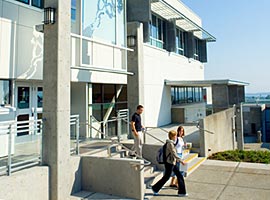What is Web 2.0 & Why Do I Need It?
Web 2.0 (or web two point oh) refers to the new generation of internet use. This is the shift of internet use from an information source to a social networking tool.
Knowledge of web 2.0 tools can help faculty to develop course activities that are more engaging and interactive than the traditional lecture. This also generates opportunities for creative assessment as well as collaboration with academic colleagues from around the world. You can watch this brief montage-style video, or this lecture-style video to learn more about how Web 2.0 is changing everything.
Over the next few weeks, the Malaspina Teaching and Learning Centre will be generating information about many of these tools.
Please remember that this is for your information only, and that IT services does not provide support for these web-based programs.
We will start with Blogs because they are tools that are becoming a prevalent means of distributing information, ideas and opinions. We will then look at other means of interacting and sharing using Web 2.0 tools that are available.
Please take some time to explore and learn.
Click here to go to the next article.
